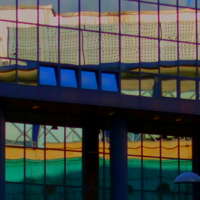 CENTRAL ENGLAND: Mike Wheeler's concert reviews from Nottingham and Derbyshire feature high profile artists on the UK circuit - often quite early on their tours.
CENTRAL ENGLAND: Mike Wheeler's concert reviews from Nottingham and Derbyshire feature high profile artists on the UK circuit - often quite early on their tours.
A Meditation on Human Fragility
GIUSEPPE PENNISI reports on a special performance in Rome of Verdi's Requiem
On 15 February 2023, the concert season of the Rome Opera House started with a very special initiative: Verdi's Messa da Requiem. The previous night, the dress rehearsal had been opened to a paying audience as a part of crowdfunding to finance a foundation with the objective of preventing the auctioning off of Villa Verdi.
Me too. I was a pilgrim to Villa Verdi, the composer's house-museum in Sant'Agata di Villanova sull'Adda, immortalized by Bernardo Bertolucci in the 1979 film La Luna, but little known to most, Giuseppe Verdi was also a skilled administrator and a good agronomist. In 1844, thanks to the first earnings with the debut of Ernani in Venice, he was advised by Antonio Barezzi - the father of his first wife - in the purchase of a farm. The property called 'Pulgaro' was near the Roncole, a hamlet of Busseto where he was born and raised. The intention was to bring the young composer closer to his land, making him buy possessions on site. Despite this, Verdi rarely visited the farm of the 'Pulgaro' - he preferred to entrust the management to his parents.
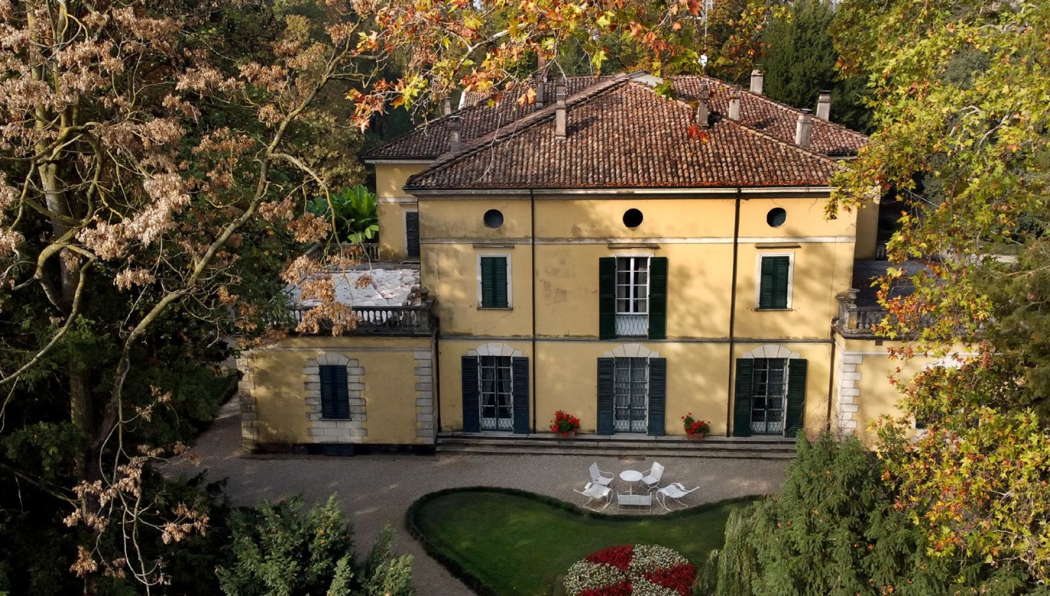
Villa Verdi
On 1 May 1848, Verdi decided to buy, at the suggestion of his father, a new estate in Piacenza, the Tenuta di Sant'Agata, which also had a villa. The new estate had the extension of 1,078,500.5 square metres. In addition to this, Verdi obtained by contract all the seeds, the poles for the vines, four large barrels, three tines for wine and the precious 'Ongina machine', a mechanical pump capable of sucking water from the nearby Ongina stream and conveying it for irrigation of his possessions. In addition to the Ongina, Verdi could dispose of the proximity of the waters of the Adda and especially the Po.
After having hosted his parents for some time, Verdi invited his father to go and reside in Busseto and gradually began to adapt the house according to his own needs, completely renovating the manor and dedicating himself more and more to the creation of the park and the management of the fields.
In the Sant'Agata residence, Verdi composed the Requiem in honor of Alessandro Manzoni, directed by the composer then in the Milanese Church of San Marco on the evening of 22 May 1874. Several operas saw the light in Sant'Agata: Il trovatore and La traviata in 1853, Simon Boccanegra and Aroldo in 1857, Un ballo in maschera in 1859, La forza del destino in 1862, Don Carlos in 1867, Aida in 1871, Otello in 1887 and Falstaff in 1893.
Currently, the villa is owned by the descendants of Maria Filomena Verdi, daughter of a cousin of Verdi whom he maintained as his daughter and who lived in the villa like his descendants after the death of the composer. The family opened to the public five rooms on the ground floor of the villa including the bedroom of Giuseppina Strepponi where she died in November 1897. The dressing room is dominated today by a six-pedal Fritz brand top piano that Verdi used at the time of Rigoletto and Aida. They also opened Verdi's bedroom where he slept and worked, as well as a studio where he used to keep accounts of the estate and administer it.
The descendants of Maria Filomena, no longer able to maintain the villa, put it up for auction. In January 2023, the Minister of Culture announced the creation of a foundation participated by the Ministry, the Emilia-Romagna Region and the Municipalities of Busseto and Villanova. In collaboration with the Italian lyric-symphonic theaters, the initiative supports the project of safeguarding, promoting and enhancing 'Villa Verdi'.
A cycle of fourteen performances of Verdi's music and operas will involve the fourteen lyrical-symphonic foundations from 10 February to 15 June 2023 and the proceeds will be donated to the purchase of the site and its appurtenances by way of pre-emption. The proceeds from ticket sales, minus the management costs of the single event, will be acquired by the Association of Opera Foundations: they will be donated to the current account associated with chapter 3680/04 of income relating to the Ministry of Culture. Additional resources may be allocated to this expenditure chapter, through donations from individual citizens and enterprises.
Both the 14 February general rehearsal and the 15 February performance were sold out. Many people in the audience added a donation to the ticket purchase price.
According to numerous Verdi scholars, in the first place Massimo Mila, Verdi's Requiem differs markedly from other music for Masses in that it is a great secular and heroic melodrama of reflection on death: the twenty-eighth melodrama, if you add it to the twenty-seven operas especially conceived for the stage. Like many personalities of the national Risorgimento - Manzoni, Rosmini and a few others are exceptions - Verdi was agnostic or at least 'doubtful' in religious matters. He had become so after the death of his first wife and remained so for the rest of his life. This is testified not only by his correspondence - also available in abbreviated editions - but above all by his works, especially those of the years closest to the Requiem; in Don Carlos and Aida the Church, both Catholic and Egyptian, and its hierarchies are represented as oppressive and ruthless towards everyone - even the political power. In La forza del destino (which takes place between cloisters and convents), the presence of God is confined to the last scene of the edition prepared for Italy. In Falstaff, the farewell to life is an escape in which one sneers that 'the whole world is a joke'.
Affirming and indeed reaffirming the secular nature of a Requiem does not mean diminishing its value and meaning. It is a great masterpiece whose central part - the Dies Irae - evokes the violence and vastness of the sound of a life intensely lived and whose conclusion - the sweet 'Lacrimosa' and the poignant Libera Me - is a meditation on human fragility in front of the cosmos. The greatness, all the more tragic and more immanent, of the Requiem, appears in its dimensions if compared with Verdi's four sacred pieces, so elegant in their balances that they seem almost artificial.
What does it mean to give a Catholic musical reading to a composition that has been considered a great secular melodrama, even if written on a religious text in Latin? This is felt, in the first place, from the initial introduction and the ending. The entrance of the choir is pianissimo, a sign of the recollection essential to understand the work. In the finale, after the Libera me, there is Domine da morte aeternam - a search for eternal peace.
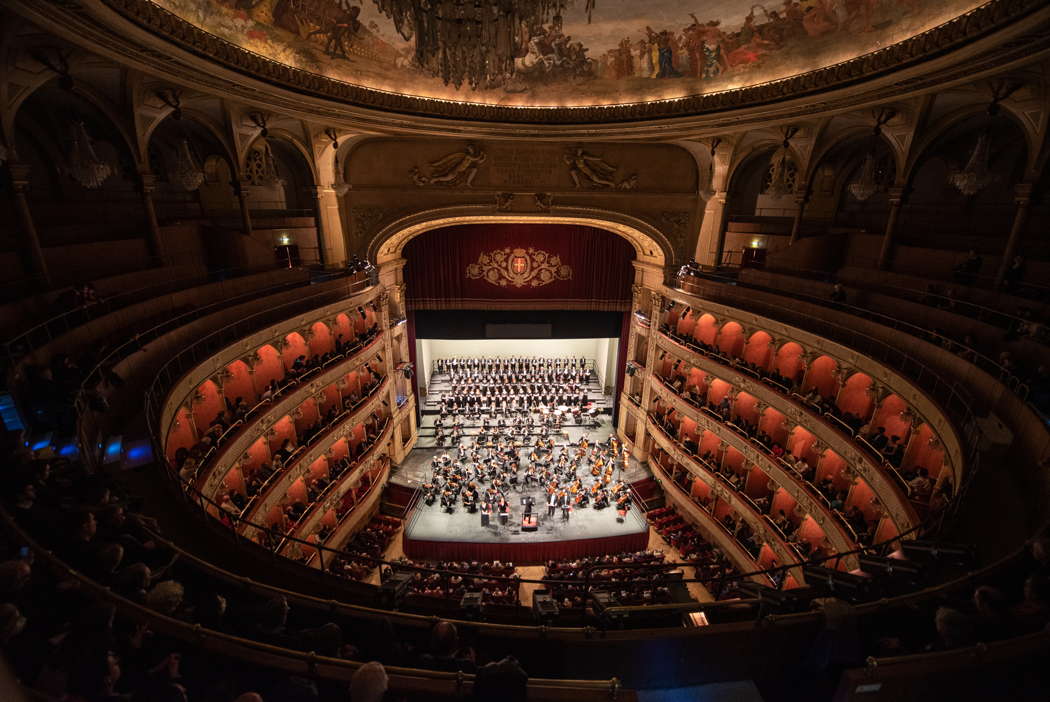
The chorus and orchestra of Opera di Roma conducted by Michele Mariotti in Verdi's Requiem. Photo © 2023 Fabrizio Sansoni
The Requiem conducted by Michele Mariotti differs from almost all the performances I have previously heard, even those in the Cathedral of Parma or in the Basilica of Santa Maria in Trastevere and other churches where it had to be performed during the ecclesiastical celebration. Before starting the performance, Mariotti asked the audience to provide a tribute to the recently dead Gianluigi Gelmetti (who had been musical director of the Rome Opera House for ten years) and to the victims of the Turkey-Syria earthquake. Then, he started in pianissimo the Requiem aeternum dona eis until the explosion of the orchestra, chorus and orchestra in the Kyrie. He conducts with almost closed arms, with his hands and fingers as well as singing on a very low voice. No doubt, there is a strong feeling between Mariotti and the excellent orchestra.
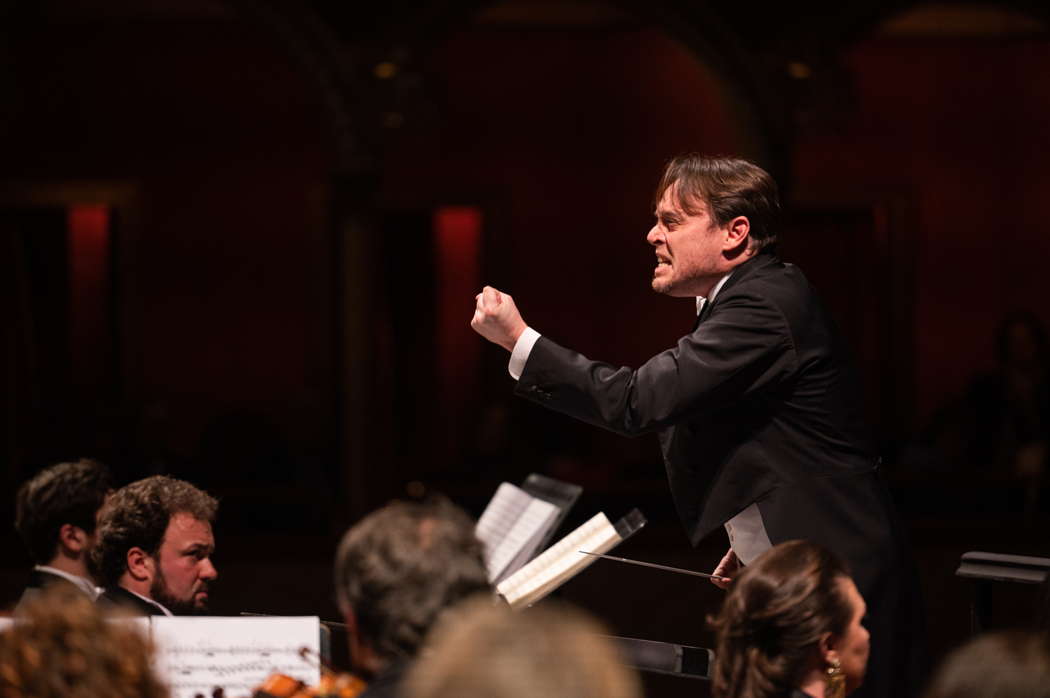
Michele Mariotti conducting Verdi's Requiem for Opera di Roma. Photo © 2023 Fabrizio Sansoni
The chorus, well prepared by Ciro Visco, achieved marvels. Among the soloists, there was a sudden change because the soprano scheduled to sing, Eleonara Buratto, had flu - it is the 'flu season' in Rome. She was replaced by the young Russian Elena Stikhina who is already in an international career; she did very well, particularly in the Libera Me.
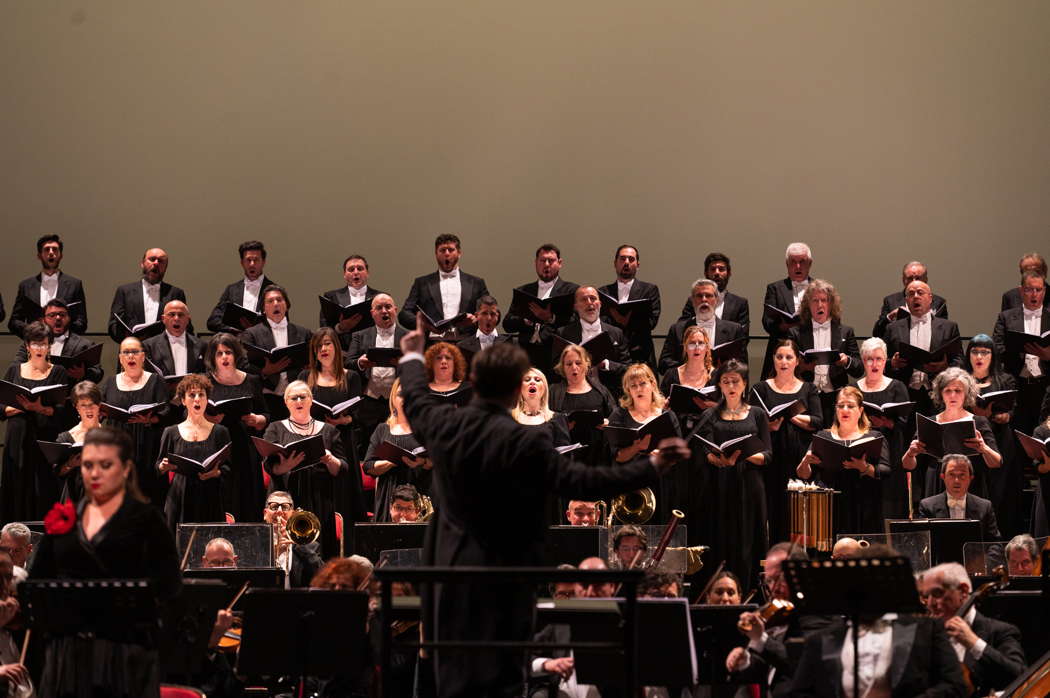
Members of the chorus with, bottom left, Elena Stikhina, performing Verdi's Requiem for Opera di Roma. Photo © 2023 Fabrizio Sansoni
The tenor was the Romanian Ştefan Pop, a frequent singer at the Rome Opera House. The bass was the Georgian Giorgi Manoshvili, who sang in the recent Rome Opera Aida.
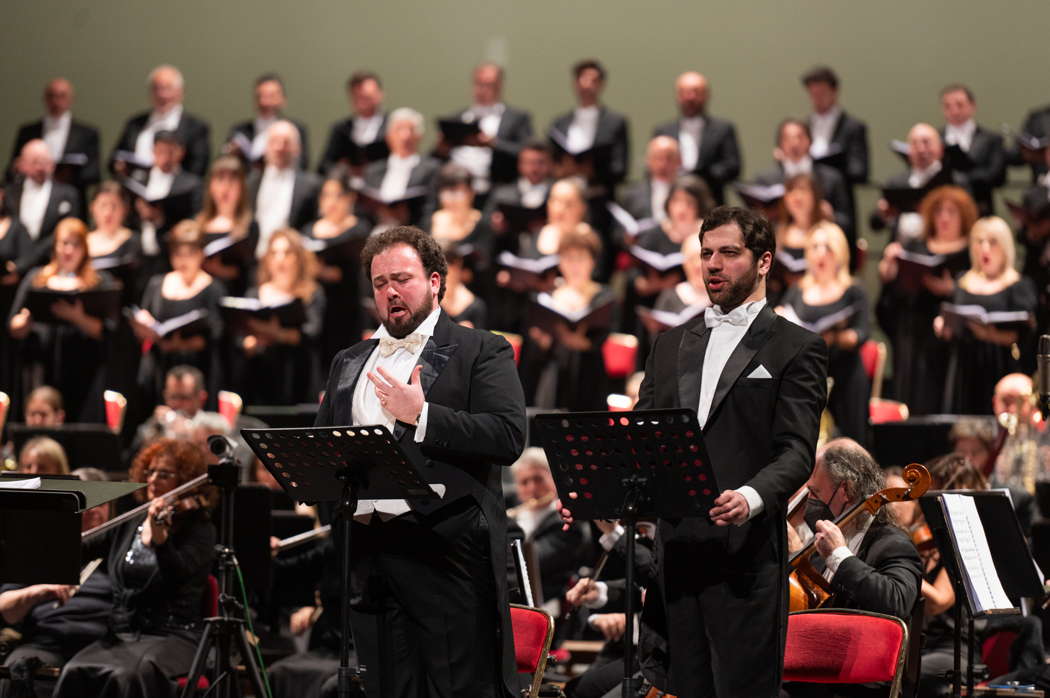
Ştefan Pop and Giorgi Manoshvili performing Verdi's Requiem for Opera di Roma. Photo © 2023 Fabrizio Sansoni
There were some fifteen minutes of applause and accolades, and even a request for an encore ... of a work of an hour and forty minutes.
Copyright © 17 February 2023
Giuseppe Pennisi,
Rome, Italy




